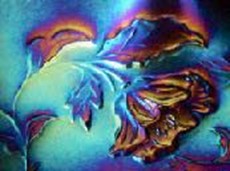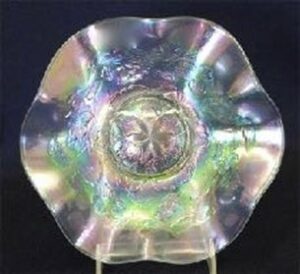Six Petals
By Barb Chamberlain
Six Petals is a product of the Dugan Glass Company, which was in existence as Dugan from 1909 – 1913. A disastrous fire occurred in 1912. The production area was basically unharmed in the $20,000 loss, but just imagine that loss of money in that day and age and how devastating that must have been. Many of the earlier molds had been in use on the production floor when the fire happened, which was a saving grace, but some of the Dugan staple molds were lost. Shortly after the fire, Thomas Dugan left the plant. In June of 1913, the plant was changed to the Diamond Glass Company.
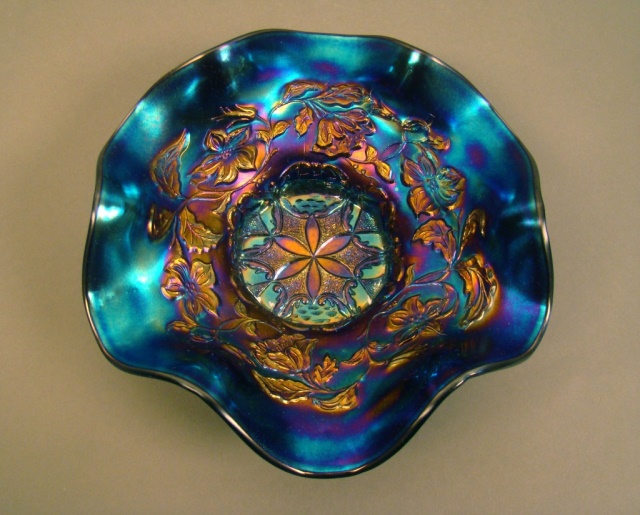
Above is the Six Petal six-ruffle bowl in amethyst.
Someone suggested that the name Six Petals isn’t a very descriptive name, since the pattern was named for the flower design (with six petals) in the center of the bowl. When Mrs. Hartung and Mrs. Presznick named the patterns, they had to decide on an appropriate name. Thank goodness they named these patterns – can you imagine what might have happened if we would have had to call them by their pattern numbers? A suggested name on Facebook was Poppy Garland for the poppy-like motif circling around the center stylized flower design.
Above is one of the poppies that circles the sides of the bowl.
I’m thinking that Six Petals may have been one of the molds that was lost because the piece is found only in purple/amethyst, oxblood, peach opal, and white in any quantity. Also reported as selling are one marigold, one lavender, and two blue. Marigold, of course, was one of the colors that Diamond Glass Company used most in their production, but Dugan used it more sparingly.
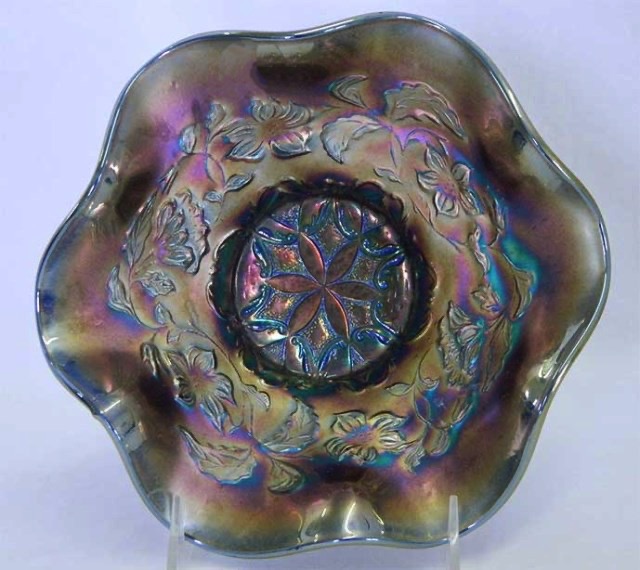
Although the blue bowl above is rare, it might not be as desirable because the quality of the iridescence is not the best.
The Six Petals pattern was only made in one shape, to my knowledge – the bowl shape. This shape was modified by the men who shaped the patterns into six-ruffle, crimped, and tri-corner shape. The marigold, lavender, and blue were only made in the six-ruffle shape. White appears to have only been made in the six-ruffle style, as well, but the purple and peach opal are found in the ruffled, tri-corner, and crimped. Some of the crimped pieces seem to have the three-in-one shape, while a very few have a flattened crimped shape. One peach opal, described as two sides up, was also reported as selling. In addition, another peach opal had an enameled decoration. This is a pattern that is often confused with a few other Dugan patterns, so this enameling on Six Petals may or may not exist.
The white Six Petals bowl appears to have only been made in the six-ruffle style.
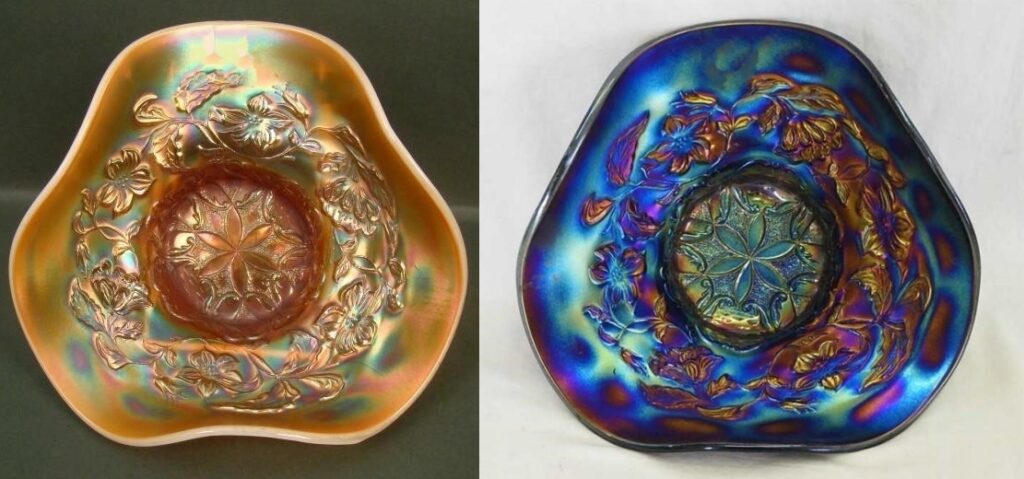
The peach opal bowl, left, and the purple bowl, right, exhibit the tri-corner shape.
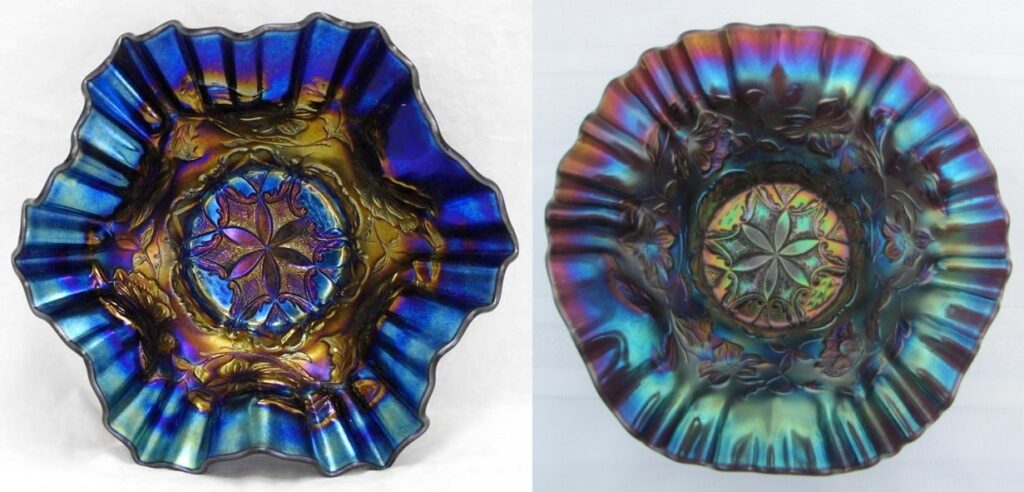
The two crimped edge bowls, above, seem to show that the one on the left looks more like a three-in-one shape, and the one on the right is more flattened.
Wouldn’t a plate or an ice cream shape bowl make a nice addition to this pattern? None have been reported, but as one of our carnival glass friends says, “It could be out there.”
If you have any pieces in colors or shapes not described, please contact me with information and photos at dbcham@iowatelecom.net or 124 E. Honey Creek Dr., Manchester, IA 52057. I will share your items in future issues of The Carnival Pump.
This article first appeared in the ICGA Pump in the September 2020 issue and is reprinted with permission.

